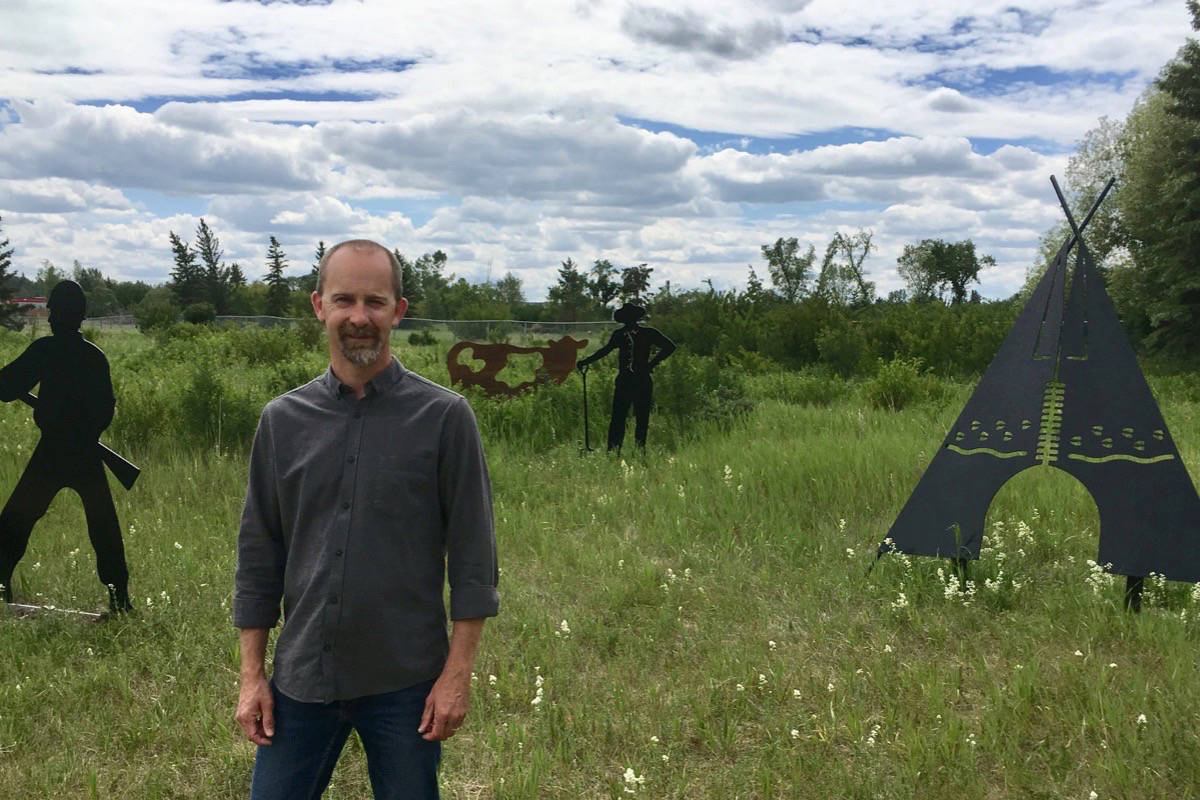A brilliant new means of enlightening Red Deerians on the history of many popular City parks is taking shape.
Signs of what this fascinating program is can already be seen throughout the sprawling, peaceful and picturesque Bird Sanctuary, adjacent to the Kerry Wood Nature Centre.
“When the City passed the new Waskasoo Parks Interpretive Master Plan in 2012, part of what’s in it is a redoing of the interpretive signing in the parks,” explained Todd Nivens, executive director. “And we have a lot of freedom in how we do that.
New colourful signs and fascinating representative ‘figures’ have been popping up throughout the sanctuary, detailing the history of the site and also its natural aspects, too. One of the nearby picnic table’s top has been transformed into an engaging board game.
”It gives us the opportunity to tell those stories in a really interactive and meaningful way. And that’s the approach we have taken throughout the Sanctuary and through the first batch we did at Discovery Canyon.”
Nivens said sign projects over the next couple of years include Rotary Park, Barrett Park, Coronation Park and Galbraith Park among others.
“The really cool thing about the Interpretive Master Plan is that it breaks the Waskasoo Park system down into cultural and natural history thematic areas. It ensures all the relevant stories get told.”
Speaking specifically of the Bird Sanctuary, the site has long been considered one of Red Deer’s most inviting natural areas to explore. It has a rich history as well.
“It’s a remarkable story. John Jost Gaetz and his wife Grace and his mother Catherine lived up on the hill, and you can still see their house,” he explained, referring to the old boarded up farmhouse on the brow of the hill near the Michener Centre grounds and the Red Deer Cemetery.
Today, the site consists of a grassland, a wetland and a forest on the escarpment. And it’s pretty amazing it’s all here and wasn’t developed way back in Gaetz’s day into a site for further farming or community expansion.
They chose to leave it in its pristine, natural state. “They loved it. They could literally sit at the top of their land and watch moose and deer; in the spring they could watch the water fowl come and land on the ponds, and in the fall they could watch the water fowl leave,” he said. “I think it just made an impact.”
Ultimately, the land – which could have been developed and utilized for any number of purposes – was left ‘as is’.
According to the Waskasoo Environmental Education Society, “The Gaetzs were very generous, hospitable, and community-minded people and their home, which Mr. Gaetz had added on to after his marriage to Grace Elder in 1905, was a favourite gathering place for the people of Red Deer and district.
“The Gaetzs also had an appreciation for the beauty of nature and decided to neither cultivate nor log any more land around the two oxbow lakes and along the heavily timbered slopes. As was the case with their home, they welcomed others to enjoy this area and to use it as a place for recreation and fun.
“Mr. Gaetz, together with the members of the Alberta Natural History Society, for many years worked hard to maintain and protect the Sanctuary. One particularly noteworthy friend of the Sanctuary was Red Deer’s distinguished naturalist and writer, Kerry Wood.”
Meanwhile, just a short ways down the trail heading south, visitors will find several representative figures telling several stories, and a sign that both provide details on the land’s history.
To begin with, First Nations peoples camped and hunted on the land for generations. “The land acted as hunting, camping and gathering grounds. During the Second World War, we are right adjacent to the Memorial Centre which (served as) training grounds.
And the Sanctuary itself was essentially part of a shooting range. Soldiers were shooting into the Sanctuary for target practice.
“The northern section of the Sanctuary was the Glenmere farms – a dairy operation for a number of years.”
Also, land between nearby Lindsay Thurber Comprehensive High School, Parkland School and the west Gaetz Lake was used as a garbage dump into the 1960s.
Walkers may also notice the swaths of caragana bushes flanking the trail as well. These, interestingly enough, came about from folks clearing them out from around their homes over in the Waskasoo neighbourhood and the seeds landing here and there on the current Sanctuary site. “It’s all remnants of lawn clippings,” said Nivens.
Meanwhile, at the head of the trail, are figures depicting Catherine and John Jost Gaetz.
“The idea is that the steel, cut-out figures are based on images of them,” he said. “The idea is that they are looking back across the land towards their house.”
Nivens said that with the surge in the City’s growth over the past several years, and shifts in Society in general, there is less connection amongst citizens to ‘place’.
“Part of the reason that it becomes more important to tell these cultural stories along with the natural stories in public settings is that the outdoor settings are where people often come to when they first arrive in a new community – to socialize and to explore and building that sense of home.”



